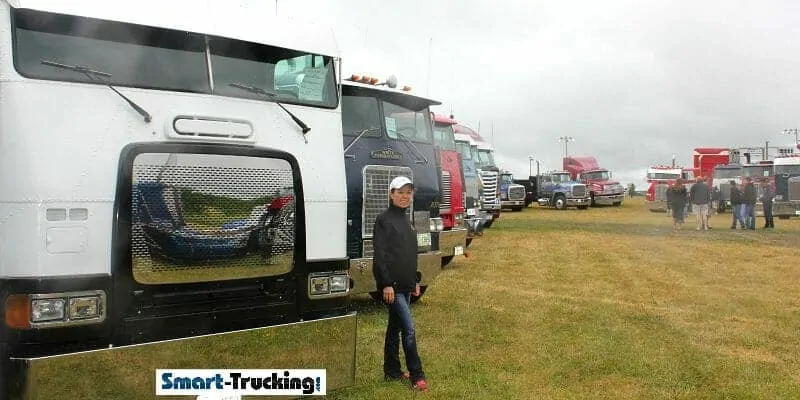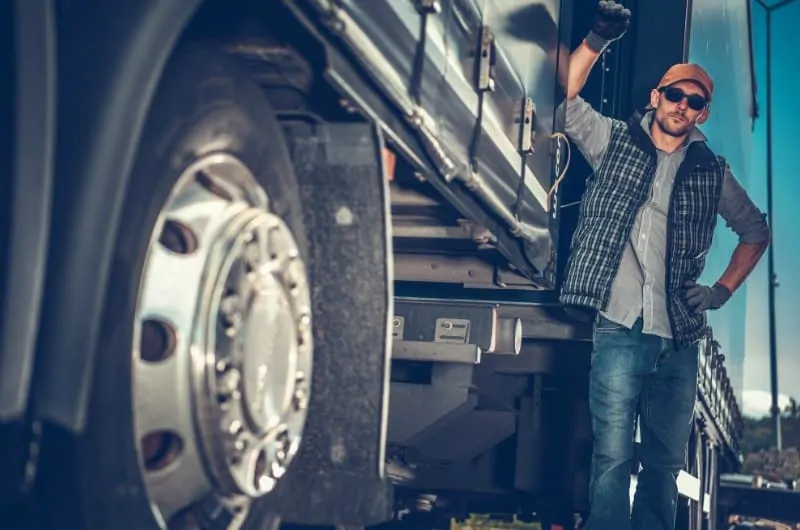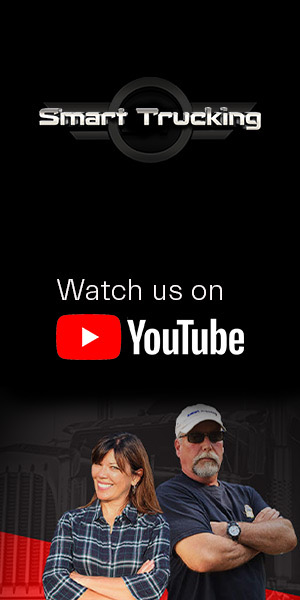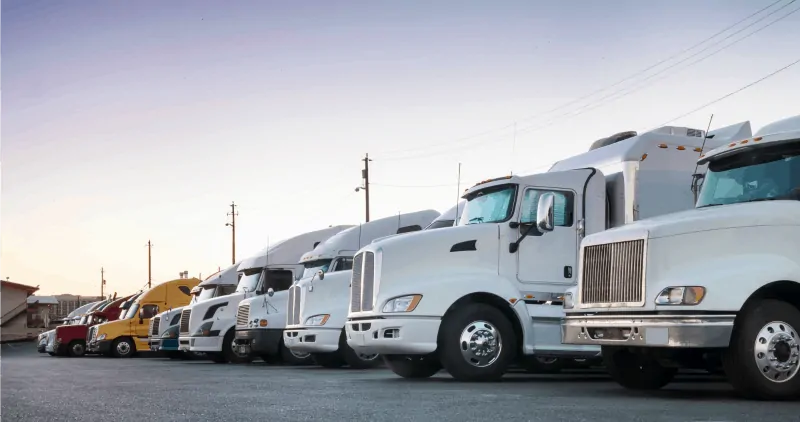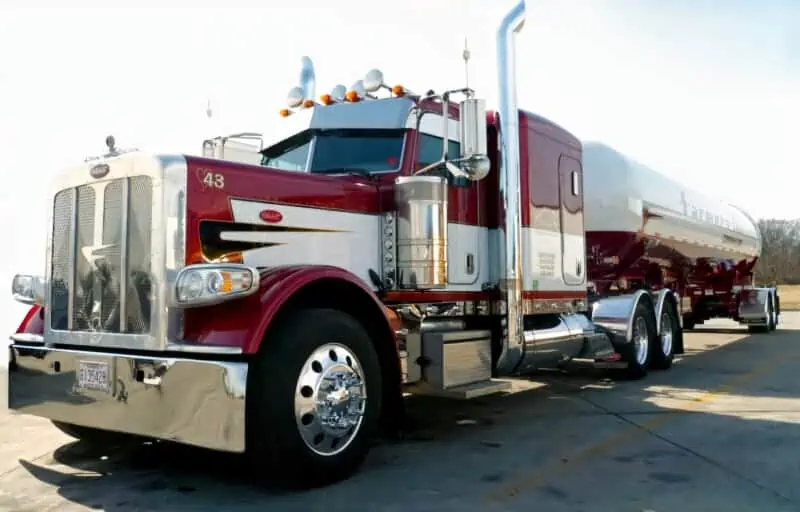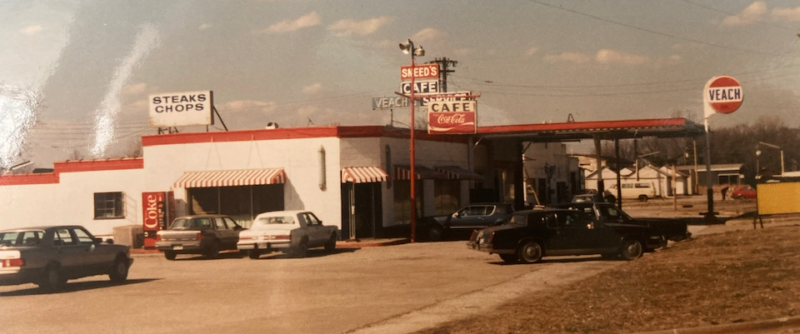Old road dogs whose rigs have traveled more miles than most airplanes know trucking terms, inside and out.
But trucking industry lingo can be confusing for those just beginning a truck driving career.
There are tons of acronyms, lots of federal regulatory agencies, and a mind-numbing array of terms describing every scrap of equipment used in the various segments of the industry.
In short, trucking lingo can be overwhelming.
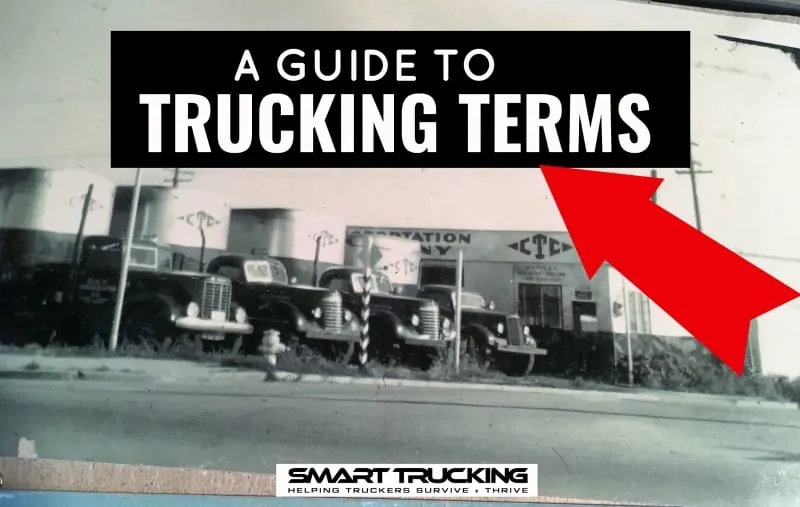
Thankfully we’ve compiled a long list of words and phrases worth knowing.
They may help add a little clarity to the trucking business in general, and a few of them are downright amusing.
Trucking Terms A-Z
ABS—anti-lock brakes use short applications of pressure to prevent wheels from locking up during braking. This often results in shorter braking distances and safer operation in snow, ice and on wet road surfaces.
Air Freight—freight that’s shipped at least partially by air.
Air Ride Suspension—suspensions that use air bags to provide a much smoother ride which may be necessary for sensitive freight like household goods and electronics.
Audit— a safety audit is a review of a motor carrier’s records by the DOT in order to verify that it has satisfactory safety management controls in place that are compliant with Federal Motor Carrier Safety Regulations (FMCSRs).
Authority—motor carrier authority is mandatory for trucking companies operating as for-hire carriers transporting passengers or regulated commodities while engaged in interstate commerce.
Authorized Carrier—an authorized carrier is one that’s included on a list of pre-approved transportation providers for a particular shipper.
Axle—the steel shaft connecting wheels on opposite sides of a vehicle.
Axle Rating—the maximum allowable weight allowed on an axle or pair of grouped axles. Usually 12,000 pounds for a steer axle, and 34,000 pounds for tandem drive and trailer axles.
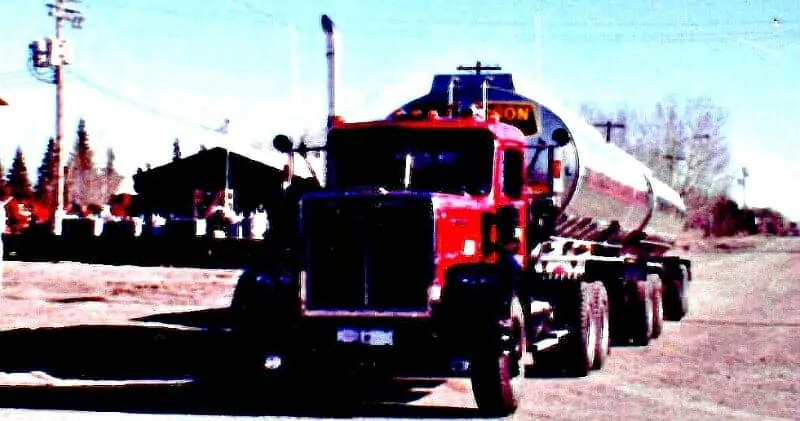
Backhaul—a return load that will get a driver back home or close to his company’s terminal.
Base Plate—a semi tractor’s license plate issued from the state in which the vehicle is registered.
Bear—state trooper or highway patrolman (or woman).
Bed Bugger—another name for a household goods driver or professional mover.
Belly Dump—a dump trailer that unloads its contents through a hopper in the bottom as opposed to raising its bed like a traditional dump truck.
Bill of Lading—a document detailing an agreement between a shipper and carrier that usually includes information like commodity, weight, pick-up and delivery dates, and payment terms.
Binder/Insurance—an insurance binder is written confirmation of pending coverage that’s provided by an insurer until the actual policy paperwork is available. Binders are usually short-term and have expiration dates.
Black Ice—a thin sheet of invisible ice that forms on wet roadways during freezing conditions
Blind Siding—backing into a parking spot or loading dock where the trailer is angled away from the driver on the passenger’s side. Blind side backing is much more difficult than driver side backing, and should be avoided whenever possible.
Bobtail—a tractor without a trailer attached.
Bogie—a chassis or frame that attaches a wheel-set to another vehicle or trailer. Bogies come in a variety of shapes and sizes for different applications.
Bonded Warehouse—apublicor privatewarehouse or storage facility where goods may be stored, assembled or manufactured without being subject to duty.
Brake Chamber—a sealed canister that houses the brake’s working parts. Brake chambers on heavy-duty trucks convert air pressure to mechanical pressure to slow the vehicle when the driver depresses the brake pedal.
Brake Drum—a brake drum is a rotating cylinder that when pressed against by a brake pad or shoe causes friction which slows the vehicle.
Bridge Formula—a mathematical equation used by DOT and state transportation agencies to determine the maximum allowable weight of commercial vehicles. Bridge formulas takeinto account gross weight, number of axles, axle spacing, and overall length.
Broker—transportation service providers that act as intermediaries between shippers and carries.
Bulk Carrier—bulk carriers haul loose, unpackaged freight like sand, gravel, gasoline, and scrap steel.
Bulk Freight—bulk freight is shipped unpackaged in large volumes and may include coal, crude oil, crushed stone and grain.
Bull Hauler—a truck and driver hauling live cattle (not to be confused with a hog hauler).
Bunk Cab—a truck’s sleeper berth that usually includes a bed and storage areas for clothes and personal items for the truck driver.
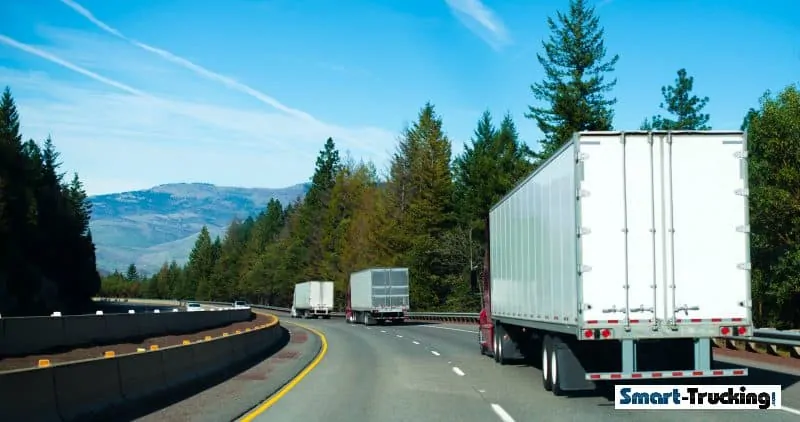
Cab Card—a state issued document that shows the states in which a commercial vehicle is authorized to operate. The card includes truck-specific information, is non-transferable, and the original must be kept in the cab at all times.
Cabover Truck—boxy, flat-front style of truck design in which the engine is underneath the cab, as opposed to under the hood in front like it is on conventional tractors. (See COE)
Camshaft—a spinning shaft with protruding lobes that open and close intake and exhaust valves when an engine is running.
Cargo—another term used for freight or commodity being transported.
Cargo Insurance—cargo insurance insures freight transported by for-hire truckers, and covers the driver or company in the event of loss, fire, and damage during transit.
Cargo Manifest—a shipping document that lists the cargo and/or passengers on a ship, aircraft, or commercial vehicle.
Cargo Weight—the weight of freight being transported. Most 5-axle tractor trailers can haul over 40,000 pounds of cargo, but their gross vehicle weight is 80,000 pounds.
Carrier—atrucking company or for-hire owner-operator that transports freight for shippers on a contractual or spot basis.
Carrier Liability—Carrier liability dictates the maximum amount a carrier can be held liable for in the event of loss, damage, or shipping delays. Carrier liability varies between carriers and shippers, and is often determined by the value and class of items being transported.
CAT Scales—private scales usually found at truck stops on which drivers can weigh their vehicles to ensure that their axle and gross weights are legal.
CB Radio—Citizens Band (CB) radios allow person-to-person communication over relatively short distances. CB radios have been popular with truckers since the early ‘70s.
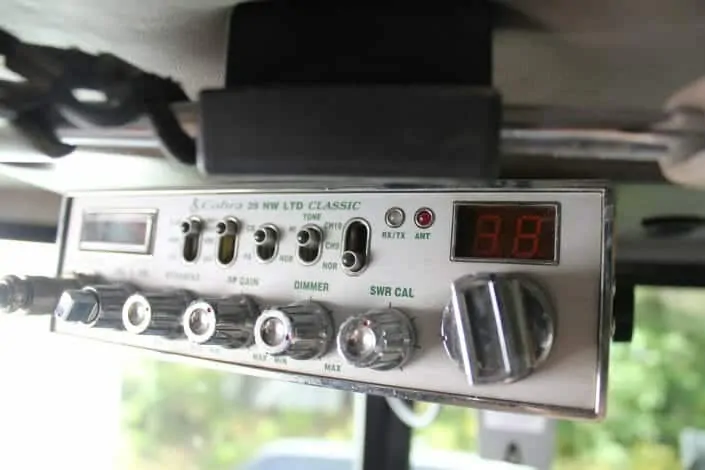
Certificate of Insurance—a document issued by an insurance company in order to verify that a policy exists for a particular entity like a trucking company or owner operator.
Chassis—the framework of a commercial vehicle to which the engine and transmission, cab, fuel tanks, axles and cargo compartments are fixed.
Chimney Blocking—is a method by which pallets are loaded onto a trailer alternating between straight and turned 90 degrees. Chimney blocking is often used for shipping produce when the total number of pallets is between 26 and 28.
Chocks—triangular wedges put in front of and behind wheels to prevent vehicles from rolling forward or backward when they’re parked, being loaded or unloaded or serviced.
Claim—a claim is made by a shipper seeking compensation from a carrier for freight damaged or lost during transmit. A claim can also be made by a trucking company or owner operator to an insurance company for vehicle damage caused by an accident.
Class One Motor Carriers—carriers with annual combined interstate and intrastate revenues of more than 10 million dollars.
Class Two Motor Carriers—carriers with annual revenues of between 3 and 10 million dollars.
Class Three Motor Carriers—carries with annual revenues less than 3 million dollars.
COE—cab-over-engine trucks (COEs) are boxy, flat-front trucks in which the engine is underneath the cab, as opposed to under the hood like it is on conventional tractors. COE trucks were much more popular in decades past when overall length restrictions were stricter.
Combination—a vehicle consisting of at least one tractor and one trailer.
Combined Gross Vehicle Weight—the total weight of a combination vehicle including power unit, trailers, fuel, equipment and freight.
Commercial Carrier— a commercial carrier is a for-hire entity that uses commercial vehicles to transport people and/or freight on public highways.
Compliance Review—a compliance review is method by which the Federal Motor Carrier Safety Administration makes sure that commercial carriers adhere to all relevant protocols and regulations. Compliance reviews may involve a state or federal safety inspector performing an on-site appraisal of your facility, equipment and records.
Consignee—a consignee is the person or entity responsible for the receipt of a shipment, and is often referred to as the receiver.(The place truck drivers deliver their load to.)
Consolidation—when numerous less-than-truckload (LTL) shipments are combined into one larger shipment that usually makes a full truckload.
Container Shipping—a method of rail and sea transportation in which freight is loaded into shipping containers which are then shipped by ship or trains. Transportation to and from ports and railheads is carried out by truck after the containers have been secured onto a truck or trailer chassis.
Contract Carrier—a carrier that provides regular transportation services for a shipper, the terms of which are laid out in a contract.
Converter Dolly—an unpowered coupling device that may include one or two axels and a fifth wheel by which a trailer can be coupled to a tractor or another trailer in a combination.
Coop—scale house or weigh station.
Coupling—hooking a tractor to a trailer, or one trailer to another when hauling doubles.
Covered Wagon—a flatbed trailer with sidewalls and an arched soft-top that resemble a pioneer-era covered wagon.
Cubic Capacity—the amount of interior cargo space inside a trailer, truck, or shipping container.
Customs—the agency or authority responsible for monitoring and controlling the flow of goods into and out of a country.
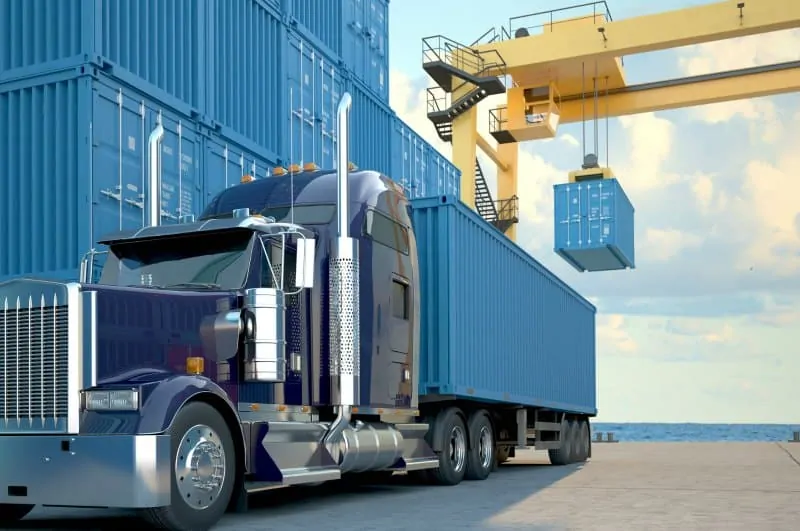
DAC—a DAC report provides driver information for companies considering hiring them. DAC reports include things like equipment operated, freight hauled, drug and alcohol test results, eligibility to be rehired and truck driving school records. Not all companies use them.
Dead Heading—driving a tractor and empty trailer to pick-up a load. In most instances dead head miles don’t generate revenue for trucking companies and owner operators, but company drivers may be paid their normal mileage rate for dead head miles. Traveling without a payload
Dedicated Run — A run that usually always goes to the same place on an identical schedule. Most drivers ‘want’ a dedicated run’. Typically experienced/senior truckers get these runs.
Demurrage—when a commercial vehicle is detained beyond the time normally allowed for loading and unloading.
DOT—Department of Transportation
Disc Wheel—unlike traditional spoke wheels, disc wheels are usually more aerodynamic, have less parts, and require less maintenance and are therefore standard equipment on most commercial vehicles.
Dispatcher—dispatchers are usually carrier employees who act as intermediaries between drivers and shippers. They’re also generally a driver’s main (and sometimes only) point of contact with the company, and they have a wide range of job responsibilities.
Dock—an area where a truck parks when it’s being loaded or unloaded. Docks, or loading docks, are usually located at warehouses, production facilities, distribution centers and freight terminals.
Dock Plate—large steel plates that cover the gaps between truck bodies or trailers when positioned in a loading dock. Dock plates make it possible for forklifts and other material handling equipment to enter and exit the truck or trailer smoothly.
Dolly—a coupling device including an axle, fifth wheel, and pintle hook that allows one trailer to be hooked to another.
Double Bottom—a phrase used to refer to a set of double trailers.
Double Clutching—a method of shifting unsynchronized transmissions in commercial vehicles that requires the driver to depress the clutch and place the transmission in neutral momentarily before depressing it a second time and selecting the next higher gear. When downshifting the process is similar, but the driver also needs to depress the accelerator to get the engine RPMs into the proper range before placing the transmission into a lower gear.
Doubles (Twin Trailers)—a combination vehicle consisting of one tractor and two trailers.
Drives—a term used when referring to drive tires or drive axles. Most tractor trailers have two drive axles, but city and LTL tractors may have just one.
Driver’s Daily Log—a detailed record of a driver’s work day that is broken into driving, on-duty not driving, off-duty, and sleeper berth sections. In years past logs were kept manually, but now they’re almost exclusively managed by onboard computers like Qualcomm units.
Driveline—the components that deliver power from the engine to the drive wheels on a car or commercial vehicle.
Drop + Hook — When a driver takes an empty trailer into a shipper’s yar and drops it. Then picks up an already loaded trailer. Saves a ton of time. Drivers tend love trucking companies that do a lot of drop + hook work.
Dry Box—an enclosed trailer used for hauling general freight that doesn’t require climate control. Also called dry vans.
Dump Body—a cargo compartment on a truck or trailer chassis used for hauling bulk commodities like sand, crushed stone, and topsoil. Dump bodies may be unloaded through gates in the floor, or by raising them and letting the contents dump out the back.
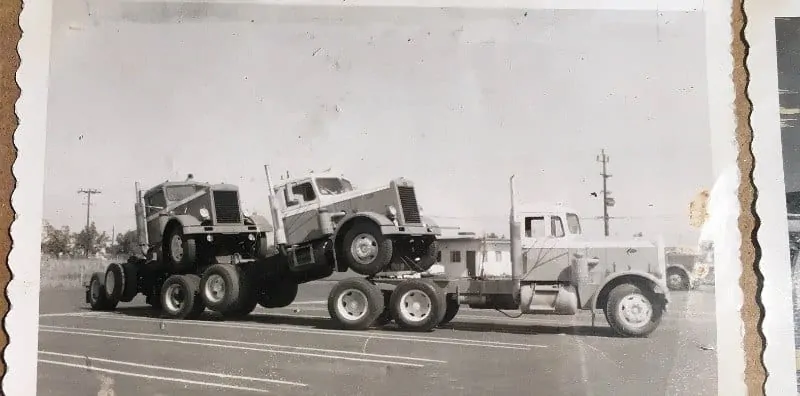
Electronic Onboard Recorder—an electronic device on a commercial vehicle that records information like its speed and the total time it has been driven in a particular period.
Endorsements—add-ons to commercial driver’s licenses (CDLs) that allow drivers to operate special combination vehicles like doubles, triples or tankers, or to haul regulated freight like hazardous materials (hazmat).
ETA—estimated time of arrival.
Excise Tax—taxes levied on goods like tobacco products, beer, gasoline, and diesel fuel.
Expediting—a segment of the transportation industry where small time-sensitive shipments are transported using dedicated trucks usually operated by team drivers.
Extra-provincial Operation—when trucks registered in one country have the authority to operate in a neighboring one. This is often the case with Canadian and American trucking companies that are permitted to haul freight into and out of both countries.
Federal Excise Tax (FET)—taxes levied by the federal government to generate revenue for ongoing expenditures like the maintenance and expansion of the highway system. Excise taxes apply to diesel fuel purchases and road use by commercial vehicles as well.
FHWA—the Federal Highway Administration is responsible for the construction, maintenance, and management of the country’s highways, tunnels and bridges.
Fingerprint a Load — If the driver must ‘fingerprint’ a load, it means they must unload it. Not a popular option for truck drivers.
HVUT—Heavy Vehicle Use Tax is an annual tax paid to the IRS by owners of commercial vehicles with gross vehicle weight ratings of 55,000 pounds and greater because it has been determined that they’re responsible for most highway damage.
FMCSA—the Federal Motor Carrier Safety Administration is an agency with the US Department of Transportation that regulates the trucking industry. Its main mission is to improve highway safety and reduce fatalities in accidents involving commercial vehicles.
FMCSR—the Federal Motor Carrier Safety Regulations are a comprehensive list of motor carrier regulations that are available to drivers in a handy pocket-sized book that should be carried with them at all times.
Fifth Wheel—a fifth wheel is the large, flat, and u-shaped coupling device mounted to a tractor’s frame behind the cab. Its opening faces away from the cab, and when the tractor is backed under a trailer it’s kingpin slides into the fifth wheel and is locked into place by steel jaws. Learn how to slide the 5th wheel.
Fiscal Year—a 12-month period in which a trucking company or owner-operator must report its finances. Fiscal years can start at the beginning of a quarter, and don’t always coincide with a calendar year.
Fixed Tandem—a set of two axles that are fixed in place on a trailer. Most 2-axle trailers have sliding tandems that can be moved forward and backward allowing the driver to spread the load over the drive and trailer axles.
Flatbed—an open trailer used for hauling freight that doesn’t require a dry van or reefer trailer. Flatbed trucking hauls freight such as lumber, masonry products, equipment, cars, and steel coils.
For-Hire Carrier—for-hire carriers are private transportation companies that move passengers, general freight, regulated commodities and household goods. For-hire carriers need USDOT and MC numbers.
Fork Lift—a material handling machine that uses forks or prongs to load or unload pallets and other freight on commercial vehicles.
Freight—a catchall phrase used to describe anything transported by a commercial vehicle, vessel or airplane. Freight can range from clothes, food and electronics, to lumber, coal, and petroleum products.
Freight Bill—freight bills, or freight invoices as they’re sometimes called, are final bills sent by the carrier to the shipper for transportation services. Freight bills aren’t the same as bills of lading, because they may include additional services that weren’t originally included when the load was tendered.
Freight Forwarder—a person or business entity that specializes in coordinating shipments between shippers, carriers and consignees. Since freight forwarders don’t have their own equipment, they contract with carriers to move goods.
Freight Shaker—a Freightliner truck.
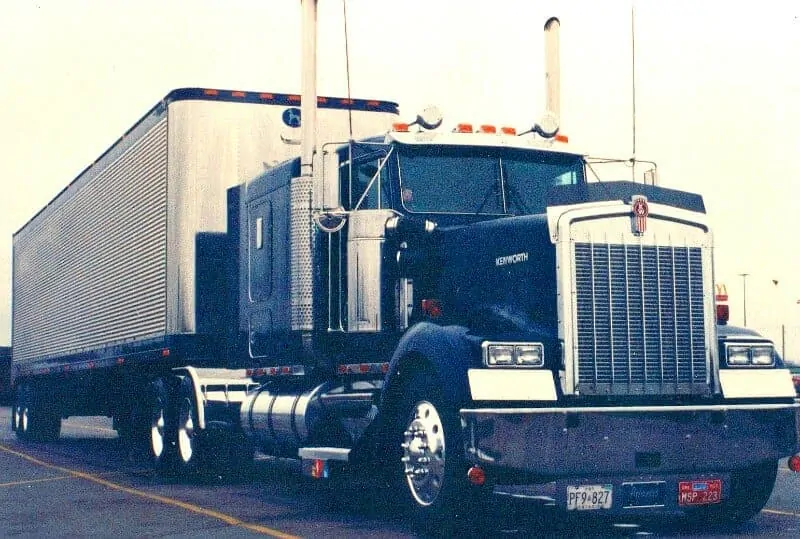
GAWR—gross axle weight rating is the maximum allowable weight that can be supported on any one axle on a commercial vehicle. The acronym may be followed by an FR or RR to distinguish between front and rear axles in a tandem or spread axle configuration.
GCW—gross combination weight is the maximum allowable weight for a combination vehicle and is specified by the manufacturer.
Gear Ratio—in mechanical jargon, gear ratio describes the number of turns an output shaft makes when the input shaft rotates once. Gear ratio is an important consideration when buying a truck or tractor, because it determines performance characteristics like low-end torque, cruising speed, and fuel consumption.
Glad Hands—couplers that allow service and emergency air lines from tractors to be connected with the ones on a trailer. When connected they interlock like two shaking hands.
Glider Kit—usually a new truck sold without an engine, transmission, driveline and rear differential.
Gooseneck—typically a light or medium-duty flatbed trailer with a protruding neck (gooseneck) that connects to a fifth wheel mounted on a hot shot type truck.
GPS—a global positioning system is a satellite-based device that calculates location, often to within a few yards anywhere in the world. Truck drivers typically use GPS units for routing and trip planning. Find our top pick of GPS for Truckers.
Grade—the ratio between rise (elevation change) and run (distance) used to determine a hill or mountain’s steepness. Also commonly called slope, incline or gradient.
Grandfather Clause—a provision in which an old rule or regulation may continue to apply in some circumstances, even though a new one has been implemented.
GCWR—gross combined weight rating (or gross combination weight rating) refers to the maximum authorized total weight of a combination vehicle. GCWR is set by vehicle and trailer manufacturers.
GVW—gross vehicle weight is the maximum operating weight of a vehicle as determined by the manufacturer. It includes the chassis, cab, engine, fuel accessories, driver, and cargo.
Hanging Iron—a term used describe securing loads on a flatbed or lowboy trailer using chains and binders.
Hazmat—controlled materials that may only be transported by a commercial driver with a hazmat endorsement on his or her CDL.
Headache Rack—a steel rack attached to the back of a truck or tractor’s cab to prevent items being transported on a flatbed from breaking free and crashing into the sleeper or cab.
Header Board—a header board is similar to a headache rack, but instead of being attached to a truck or tractor’s frame, it’s attached to the front of a flatbed trailer.
Heavy Hauler—a truck designed to haul heavier than normal loads that require permits and sometimes escorts. Heavy haulers transport items like earth moving equipment and transformers that can’t easily be broken down into smaller components.
High Cube—a dry van trailer with more interior space than a standard trailer. High cube trailers may be 14 feet high compared to a standard 13 ½ -foot trailer.
Highway Use Tax—the owners of commercial vehicles with gross weights equal or greater than 55,000 pounds must pay an annual highway use tax to the IRS. (HUT)
Hopper Body—walled, open-top or tanker-like truck bodies typically used for hauling heavy bulk commodities like grain, dry concrete mix, and food products like flour.
Horses—horsepower.
Hot Load—a shipment that needs to be loaded and delivered as soon as possible.
Hot Shot Trucking—a segment of the trucking industry in which class 3-5 trucks haul relatively light loads primarily using medium-duty flatbed trailers and large pickup trucks with fifth wheels. Learn more about hot shot trucking.
Hours of Service—regulations issued by the FMCSR that dictate the hours commercial drivers can drive and work.
Household Goods Carrier—commercial carriers like van lines that specialize in hauling household goods for consumers moving to a new home.
Icing Charge—a charge for adding ice to perishable freight before or during transit.
IFTA—International Fuel Tax Agreement is an agreement among jurisdictions in the United States and Canada meant to simplify how fuel taxes are calculated by interstate and cross-border carriers.
In bond—a shipment designated for import or export that hasn’t cleared customs.
Intermodal Transportation—shipping that utilizes more than one form of transportation including truck, rail, ship and air. Domestic intermodal truckload transportation generally uses a combination of truck and train.
Interstate—shipments that load in one state and deliver in another.
Intrastate—shipments that load and deliver within the same state.
IRP—the International Registration Plan is an agreement among states, Canadian provinces and the District of Columbia under which commercial vehicle registrations are recognized regardless of where they were issued.
ITS– Intelligent Transportation Systems provide innovative shipping solutions that typically involve traffic management services that coordinate multiple modes of transportation to make the shipping process safer, more seamless, and less time consuming.
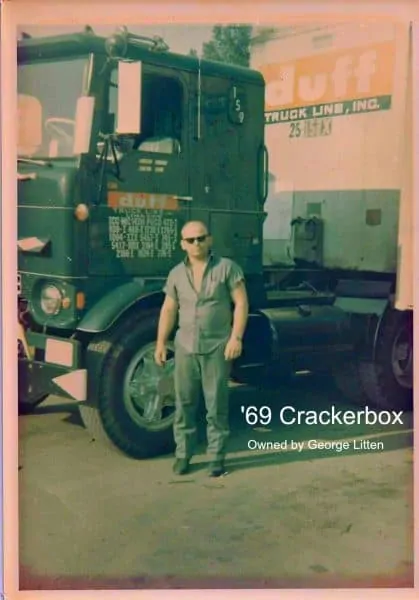
Jack Knife—a term used to describe the folding of a combination vehicle where the power unit and trailer are articulated to the point that they form an acute angle like a folding pocket knife. A jack knife skid usually occurs on wet or frozen road surfaces.
Jake Brake— a mechanism on a diesel engine that uses compression to slow the vehicle without using the service brakes. On downhill grades Jake Brakes (also called engine brakes) are often used in conjunction with the service brakes. The term is derived from the Jacobson Company that pioneered the technology. Learn more about the ‘Jake Brake’.
Just-in-Time Freight—when raw materials and parts are shipped so that they’ll be received exactly when they’ll be needed for production.
Jurisdiction—the authority granted to an agency to enforce laws in a particular area.
King Pin—a large steel pin protruding from a trailer’s front underside that locks into the tractor’s fifth wheel when the two units are coupled.
K-Whopper—a Kenworth truck.
Laden Weight—the combined weight of a vehicle, its equipment, fuel, driver and cargo.
Landing Gear—the two large retractable legs that support a trailer when it’s not hooked to a tractor.
Lease—a contractual agreement in which a lessee pays a lessor for use of an asset.
Lease Purchase Agreement—a contractual agreement similar to a standard lease, but in which the lessee has the option of buying the equipment at the end of the contract.
LTL—stands for less-than-truckload. LTL freight consists of small shipments from multiple customers that are consolidated before being transported.
Lessee—in the trucking industry, the lessee is the person or entity leasing the equipment, like a tractor or a trailer.
Lessor—the lessor is the person or entity that is leasing the equipment to the lessee.
Liability Insurance—an insurance policy designed to protect individuals and businesses from being held liable for things like negligence and injury.
Lift Axle—axles on tractors and trailers that can be raised and lowered. When the vehicle is fully loaded the axle (or axles) can be lowered to distribute the weight evenly, and when it’s empty they can be raised so the tires aren’t in contact with the road.
Linehaul— a trucking term for long-distance truck transportation between cities in different states.
Live Floor—bulk commodity trailers in which the floor panels move back and forth to unload the cargo without having to raise the bed like on a dump trailer.
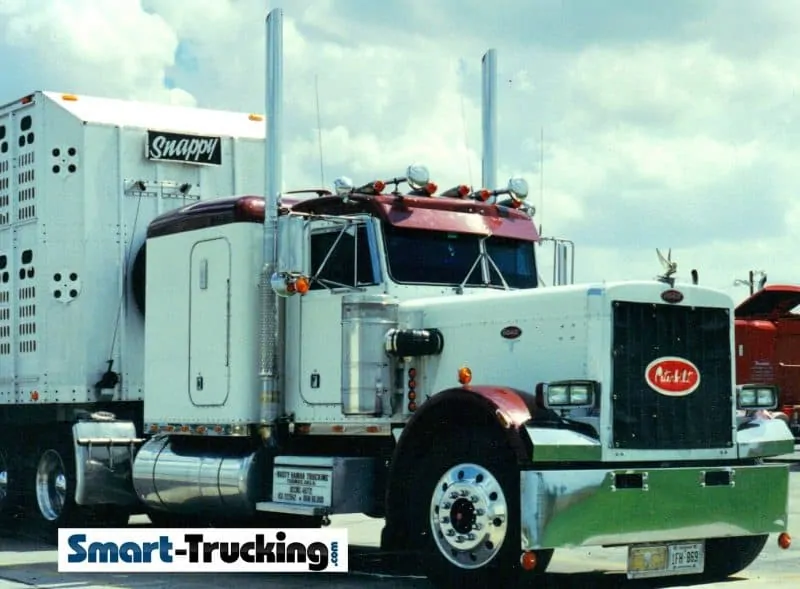
M.E.L.T.—stands for Mandatory Entry Level Training. Sets basic requirements for in-class and mentored road driving that prospective drivers must meet before obtaining their CDLs.
Motor Carrier—a private or for-hire commercial vehicle or transportation business that hauls passengers and/or freight.
MVR—stands for Motor Vehicle Record. An MVR is a report that insurance companies and trucking companies can access when screening a job applicant or current employee. MVRs include things like unpaid tickets, traffic violations, and convictions for driving under the influence.
Odometer—an instrument that measures how far a vehicle has traveled. Sometimes called a trip meter.
Onboard Computer—a computer installed on vehicles like trucks, trains, and airplanes that gathers and stores a wide range of information like location, average speed, erratic maneuvers and fuel consumption.
Operating Authority—authority granted by the FMCSA that allows trucking companies and owner-operators to transport goods between states and across some international borders like the one between the United States and Canada. Carriers with operating authority must have Motor Carrier (MC) and USDOT numbers.
Operational Records—are the documents pertaining to all aspects of the business in which you’re engaged. For owner operators operational records include things like invoices, truck and insurance payments, and receipts for repairs, scales and fuel.
Overage—when a shipment is delivered and it’s determined that it includes more product than was ordered.
Overdrive—the top gear in a truck that allows the engine to operate at reduced RPMs which conserves fuel and lessens wear.
Owner Operator—a trucker who owns his own truck. Owner operators may operate under their own authority or the authority of the carrier to which they’re leased.
Payload—refers to the freight or cargo a vehicle is carrying.
Peddle Run—driving jobs and routes that require multiple pick-ups and deliveries like those done by LTL and package delivery drivers.
Perishable Freight—cargo like fresh meat, produce and flowers that usually require temperature controlled transportation and have short shelf-lives.
Pete—Peterbilt.
Piggyback—a flatbed trailer than can carry its own forklift on the back for loading and unloading. Also refers to loaded semi-trailers shipped by rail.
Pintle Hook—large steel loops or hooks that connect a power unit and a trailer, or a trailer to a dolly.
Placard—diamond shaped signs that must be displayed in multiple places on a vehicle hauling hazardous materials. For example, corrosives, explosives, and poisonous gasses.
Point of Origin—the place where a load is picked up or a trip begins.
Port of Entry—a facility at an international or state border where commercial drivers may be required to stop and present their paperwork. Ports of entry aren’t found in all states, and vehicles may only be checked sporadically or waived through.
Private Carrier—a company that only transports its own products.
Proof of Delivery (POD)—paperwork that confirms the delivery of a load. Usually includes a date and time stamp and a legible name or signature of the person who accepted it.
Pull the Pin—refers to pulling the handle on the side of the fifth wheel that releases the steel jaw’s grip on the trailer’s kingpin. This must be done before the two units can be decoupled.
Pup Trailer—small flatbed or dry van trailers usually 26-28 feet long that are typically used together when hauling doubles.
Put on the Air — Turn on the air conditioning.
Rate—the amount paid for a load. Sometimes referred to as rate per mile, or can be % of the load value.
Reefer Trailer—closed insulated trailers that regulate temperature and humidity for sensitive products like frozen foods, fresh produce, and artwork.
Rider Policy — A policy the trucking company may have. It typically allows someone, who doesn’t work for the company, ride along in the truck with the driver. Can be limitations to a particular age, time of the year. Sometimes stipulate only immediate family members.
Rig—a trucking term used for big trucks and tractor trailer units.
Rocky Mountain Doubles—combination vehicles which consist of a tractor, a 45 or 48-foot trailer followed by a 28-foot pup trailer.
Scales—official weigh stations that randomly weigh commercial vehicles and sometimes perform mechanical and log inspections as well.
Self-Insured—when a person or business chooses to bear the risk of liability themselves instead of purchasing a traditional third-party insurance policy.
Semi— just another trucking term for a tractor trailer, big rig, 18 wheeler.
Semi-Trailer—an unpowered freight compartment connected to a power unit or another trailer in a combination vehicle.
Setback Axle—on conventional trucks and tractors, a setback axle is a steer axle that isn’t fully forward against the front bumper. Setback axles allow trucks to turn more tightly than those with forward steer axles.
Shipping Order—a document issued by a carrier to a shipper which confirms that a particular load has been booked and scheduled.
Single-Axle—a term usually used when referring to a tractor’s drive axle. A single-axle tractor has one drive axle, and a single-axle trailer has one axle.
Single State Registration System SSRS— a system instituted in 2007 that allows motor carriers to register their authority and proof of insurance in one state, as opposed to each state in which it typically travels.
Skid—another term for a pallet, on which freight is stacked before being loaded onto a truck or trailer.
Sleeper Berth—the extended portion of a cab behind the driver and passenger seats in a truck or tractor which contains a bed and storage for the truck driver’s personal items.
Sliding the Fifth Wheel—a fifth wheel that can be slid forward and backward on the tractor’s frame allowing the driver to evenly distribute weight over the axles.
Sliding Tandem—refers to trailer axles that can be moved forward and backward allowing for the proper distribution of weight on the vehicle’s axles.
Slip Seating— a trucking term for an unpopular practice where company drivers clear their personal items from their truck or tractor at the end of each shift so another driver can use it.
Speedometer—the device on a truck’s dashboard that indicates the speed it’s traveling.
Split Shifting—big transmissions like 13 and 18 speeds allow drivers to ‘split’ gears without changing the position of the shift lever. Split shifting is used primarily when pulling heavy loads or traveling up steep grades.
Spotter—also called a yard jockey, a driver who shuttles trailers into and out of loading docks at a factory, terminal or distribution center.
Spread Axle—a trailer that has multiple axles that aren’t directly next to one another like they are on standard trailers. Spread axles are most common on reefers and flatbeds.
Stacks—exhaust pipes that protrude from behind the cab on most tractor trailers.
Straight Truck—a one piece truck, or box truck.
Super Trucker—a derogatory term used to describe an inexperienced loudmouth who spends all his time in a truck stop restaurants bragging about how much money he makes, how much experience he has, and what a lady’s man he is. Learn more about ‘Super Truckers’.
Surety Bond—a guarantee in which a party agrees to assume responsibility for a debt or obligation if a borrower defaults or fails to meet certain predetermined criteria.
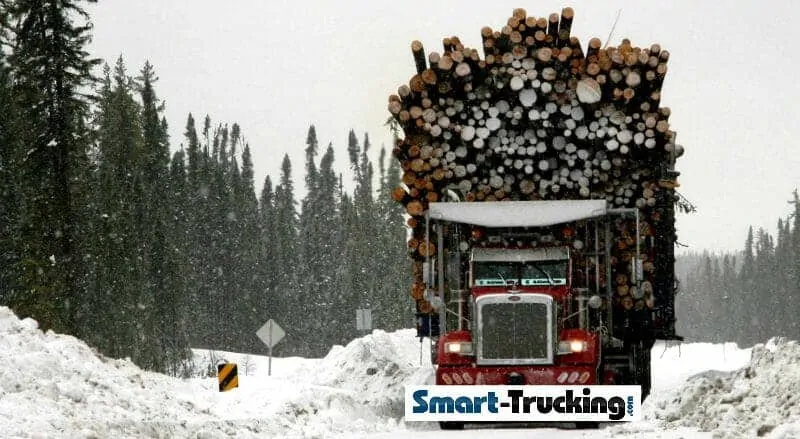
Tag Axle—tag axles can be found on tractors, trailers, dump trucks and some straight trucks. When the vehicle is loaded they’re lowered so the tires make contract with the road surface thereby spreading the weight evenly over the axles. When unloaded, they’re raised to save tire wear and increase fuel efficiency.
Tandem Axle—refers to two individual axles grouped in pairs, like on a trailer or the drive axles on a tandem axle tractor.
Tanker—a closed, baffled trailer used to haul dry or wet bulk commodities like flour, dry concrete mix, gasoline and cooking oil. More on Tanker Truck Driving Jobs.
Tanker Company—a company that specializes in hauling dry or wet bulk commodities in tank trucks or semis with tanker trailers.
Team—a common trucking term when two drivers operate one commercial vehicle. One driver is usually sleeping or off-duty while the other is driving.
Truckload—a shipment or load that fills and entire trailer, usually a 53 footer.
Toll—the fee vehicles must pay to use a particular highway or portion of a highway. Tolls are typically much higher for commercial vehicles than for cars.
Tri-Axle—a group of three axles on a tractor or trailer. A tri-axle tractor has three drive axles, and one steer axle. A tri-axle trailer has three total axles.
Trip Lease—when a driver leases his equipment to a carrier for one trip (load) only.
Triple Bottom—bulk commodity trailers that unload through three hatches or funnels in the bottom of the trailer. Triple bottoms are used to haul commodities like corn and grain.
Triples—a combination vehicles consisting of a tractor and three trailers.
Trip Permit—allows a commercial vehicle operator to move freight from one location to another once without permanent registration. Trip permits allow operators to haul loads to and from areas in which they don’t typically operate.
Trolley Brake—a brake lever in the cab of a tractor that applies pressure to the trailer brakes when more braking force is needed than is available with the service brakes.
Tractor Trailer—a combination vehicle consisting of a tractor and trailer, or trailers.
Twin Screw—a tractor with two drive axles.
Unified Carrier Registration (UCR)—a system created in 2005 to streamline the process of registration for commercial carriers engaged in interstate commerce.
Unladen Weight—sometimes referred to as tare weight, unladen weight is a vehicle’s empty weight.
US DOT—US Department of Transportation.
Vehicle Identification Number (VIN)—a unique number assigned to motor vehicles and trailers that distinguishes them from all others.
Waybill—a document issued by a carrier that lists important details and instructions pertaining to a particular shipment.
Weigh Station—or ‘scales,’ are official facilities that randomly check commercial vehicles’ weights, and sometimes perform mechanical and log inspections as well.
Wheel Base—on twin-screw or tandem drive tractors, (those with two drive axles) wheelbase is calculated by measuring the distance between the center of the steer axle’s hub and the point between the two drive axle hubs. On a single axle tractor, the measurement is from the center of the steer axle’s hub to the center of the drive axle’s hub.
Yard Jockey—a driver who shuttles trailers into and out of loading docks at a factory or distribution center.
